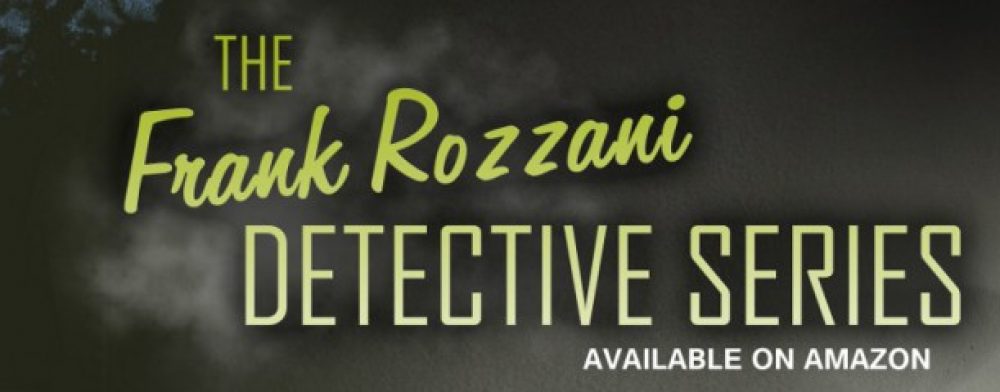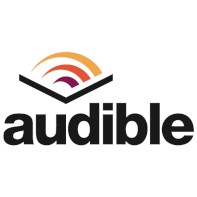If The Adult Coloring Book Craze Is Dead, It Needs A Postmortem
 In 2015, adult coloring books became the dark horse of the publishing industry, as a surprising surge in sales boosted major players’ revenues. In 2016, there was no end in sight. In 2017, the bottom fell out of the adult coloring book market and, this year, the trend is officially dead.
In 2015, adult coloring books became the dark horse of the publishing industry, as a surprising surge in sales boosted major players’ revenues. In 2016, there was no end in sight. In 2017, the bottom fell out of the adult coloring book market and, this year, the trend is officially dead.
So it seems, at least. It’s possible that adults still enjoying coloring as much as ever, but independent publishers — whose sales numbers aren’t reported with the same rigor as those of traditional publishers — have cornered the market. Here’s a dive into the timeline of the adult coloring trend, as told through the cottage industry of articles covering the phenomenon.
A July 2015 New Yorker article described the early stage of the adult coloring renaissance, noting a connection to the popularity of other infantilizing activities like adult summer camps and adult preschool. The trend was picking up, even if the numbers hadn’t come out yet: Dover decreed August 2, 2015, as the first National Coloring Book Day, and Bantam Books and George R.R. Martin teamed up on a Game of Thrones-themed coloring book. In December, Business Insider profiled a self-publishing coloring book creator who had earned $329,000 in Amazon royalties in 2015 alone, by selling her books via Createspace — noting that coloring books were at the time holding five out of the top 10 spots on Amazon’s hourly-updated bestsellers list.
Read the rest of this story HERE.
Blockchain Publishing: Improving Payments & Rights for Authors
 The traditional book publishing industry continues to see lower payments, licensing, and rights for authors in a range of categories. Several projects and organizations focused on blockchain publishing aim to change this industry for the better. Here are some examples of the current challenges and proposed blockchain publishing solutions.
The traditional book publishing industry continues to see lower payments, licensing, and rights for authors in a range of categories. Several projects and organizations focused on blockchain publishing aim to change this industry for the better. Here are some examples of the current challenges and proposed blockchain publishing solutions.
The Decline of Traditional Book Publishing
For quite a few years, there has been an ongoing debate on whether or not e-books would make printed books obsolete. While the industry and consumer focus on this debate is important, an even more crucial aspect is the overall decline of book sales in general. The days of getting wealthy off of book sales alone are, with the possible exception of a select few authors, basically gone. According to experts, authors generally make somewhere between $0.34 – $2.00 per book.
If an author wants to get on the New York Times Best Seller List, for example, it can actually cost well over $200,000 to “cheat the system”. This is a commonly accepted practice that shouldn’t be the case. While it’s possible to choose cheaper self-publishing options through Amazon, for example, the readership traction isn’t likely to be the same. Also, the current frameworks for becoming a “#1 best-selling author” are easy to manipulate as evidenced by Brent Underwood’s experiment where he created a one-page book titled, “Putting My Foot Down”, which merely features a photo of his foot.
Instead of accepting that book publishing is merely a marketing tool for paid speaking tours or an automated process that can be rigged, blockchain could improve the ability of authors to earn more money off of the direct sales of high-quality books.
Read the rest of this story HERE.
Owning Print Books Feels Different From Owning E-Books
 Researchers from the University of Arizona and Towson University have found that the psychological experience of owning an e-book is significantly different from that of owning a print book.
Researchers from the University of Arizona and Towson University have found that the psychological experience of owning an e-book is significantly different from that of owning a print book.
The results of their study into “consumer interpretations of digital ownership in the book market,” published in Electronic Markets last month, make clear what many in the publishing industry have long suspected–that owning an e-book just feels different.
The study found that research participants “described being more emotionally attached to physical books, and said they use physical books to establish a sense of self and belonging,” according to the University of Arizona. Book lovers have long lamented the loss of “book smell” that accompanies the use of e-books, and participants also touched on other important aspects of book ownership: the use of bookshelves to curate a persona and the ability to augment the pages of a book with marginal notes, in particular.
Read the rest of this story HERE.
BookExpo 2018: The Audiobook Market Grows Globally
The audiobook boom is most prominent in North America, and it is spreading across the world, as discussed in a panel on Wednesday at the New York Rights Fair entitled “The Audiobook Heard ‘Round the World.”
Gustafsson, whose company is market leader Audible’s main competition in Europe, noted that streaming services are particularly attractive in countries that have relatively “immature” audiobook markets. The all-you-can-listen model is effective at getting listeners to try the services and sample books on topics or in genres they might be unwilling to purchase.
Read the rest of this story HERE.
How a book can become a hit before it’s even finished
/cdn.vox-cdn.com/uploads/chorus_image/image/59887819/450398207.jpg.0.jpg) Every season, as if by magic, there are certain books that seemingly everyone has to have an opinion on. Out of the million or so books that get published each year, there’s always a small collection that gets featured in the New York Times and the New Yorker and the Rumpus, that show up in artfully posed Instagram accounts, that all the cool kids on Twitter are discussing.
Every season, as if by magic, there are certain books that seemingly everyone has to have an opinion on. Out of the million or so books that get published each year, there’s always a small collection that gets featured in the New York Times and the New Yorker and the Rumpus, that show up in artfully posed Instagram accounts, that all the cool kids on Twitter are discussing.
That the same handful of books tend to get bookstagrammed and repeatedly featured and discussed is not a coincidence, but rather the result of a small army of industry insiders working relentlessly to create buzz around these titles. And one of the best ways to create buzz is through the Buzz Books panel.
Every year at Book Expo — one of the biggest of the publishing trade shows, traditionally scheduled for the end of May; this year’s starts on May 30 — an audience of booksellers, librarians, and publishing professionals packs into one of the biggest rooms of New York’s Javits Center to learn about the year’s Buzz Books picks. There are three presentations: one for adult fiction, one for young adult fiction, and one for middle-grade fiction. Each book is presented by the editor who acquired it, and at the end of the panel, there are galleys available for audience members to take home with them.
Read the rest of this story HERE.


Reblogged this on Legends of Windemere.
LikeLiked by 1 person
Thanks for sharing this, Charles.
LikeLike
You’re welcome.
LikeLiked by 1 person
Reblogged this on DSM Publications.
LikeLike
Reblogged this on Anna Dobritt — Author.
LikeLiked by 1 person
Thanks for sharing this, Anna.
LikeLike
I love my adult coloring books, Don. Lately I haven’t given it much time, but it’s a wonderful stress reliever. My favorite line is Creative Haven.
I hoped to create one for Atonement, Tennessee… but no time… Hugs.
LikeLiked by 1 person
My awkward left-handed ness prevented me from staying between the lines in kindergarten. Add in my 55-year-old eyesight and it would probably frustrate me. I do color with my ten-year-old daughter and now, my two-year-old granddaughter. Our output is very similar.
LikeLiked by 1 person
LOL. I never said anything about staying in the lines! I couldn’t as a kid, and I still can’t now. 😀 My skill is probably on your granddaughter’s level.
LikeLiked by 1 person
Reblogged this on Chris The Story Reading Ape's Blog.
LikeLiked by 1 person
Thanks for sharing this, Chris.
LikeLiked by 1 person
Welcome, Don 😃
LikeLiked by 1 person
Brent Underwood’s experiment was amusing as well as an eyeopener. An informative selection of shares, Don. Thanks ❤️
LikeLiked by 1 person
Thanks Tina
LikeLiked by 1 person
Great post. I’m unsurprised at the finding that readers feel differently about print versus electronic books. I would prefer print books, but I can buy four times as many ebooks for the same price. Plus there’s the convenience factor. Thanks for the industry updates!
LikeLiked by 1 person
For someone that reads a lot and travels, eBooks have literally lightened my load.
LikeLiked by 1 person
I’m an hour’s drive each way to the nearest bookstore, so ebooks are immensely convenient for me too. 🙂
LikeLiked by 1 person
Reblogged this on Viv Drewa – The Owl Lady.
LikeLiked by 1 person
Thanks for sharing this, Viv.
LikeLike